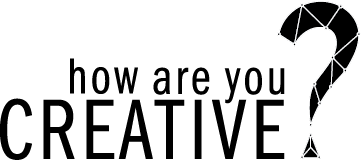Cohort 3
The 2022 cohort (Cohort 3) created the following definition of youth cultural heritage (YCH): YCH is creating supportive spaces for youth to connect to the past and present and create an understanding of themselves through the intergenerational passing down of cultural knowledge, skills, values, and respect as a means to live and stay grounded while contributing to the multicultural society we live in.
Sitka School District – Stop-Motion Animation Youth Cultural Camp
Through the Youth Cultural Heritage Project Grant, Sitka School District Youth worked with culture bearers on Lingít language. Students chose vocabulary terms and sentences they wished to learn, and adults researched the selections and offered coaching. Students learned how to use stop-motion animation and audio capture tools to collaboratively depict the vocabulary and phrases. Students hosted a short film fest to premiere their videos to their families.
See Stories – Angoon Podcasting Workshop: Documenting WWII Stories of Resistance & Resilience
For their Youth Cultural Heritage Project in 2022, See Stories led a youth filmmaking workshop in Angoon in partnership with Unangas Elder, Barbara Shangin. Teens created original videos on
WWII stories of resilience and resistance. The workshop culminated in 12 youth-produced films that documented WWII history from an Indigenous lens, and a community film screening for the community to commemorate their stories. The Angoon Youth Filmmaking Workshop
was based on Barbara’s family history of internment during WWII in Angoon, and was rooted in youth’s exploration of cultural heritage.
Gwich’in Social Cultural Institute of Alaska – Ch’anjaa Naii Googwandak Storytelling Workshop
The students of the Yukon Flats School District Cruikshank School were sponsored to attend the Ch’anjaa Naii Googwandak Project Storytelling Workshops, with support from the Youth Cultural Heritage Grant. These workshops were funded by the Beaver Village Council Elder events by the Administration for Native Americans (ANA) in partnership with the Gwich’in Social Cultural Institute of Alaska (GSCIA) and Council of Athabascan Tribal Government (CATG). Students learned their heritage language, Gwich’in from Elders and the Cruikshank School Gwich’in language teacher, Paul Williams, Jr. and made a variety of projects including the highlighted booklet by senior William Fisher.
Deborah Bitanga with McLaughlin Youth Center – Food & Culture, Our Hopes for the Future
With support from the Youth Cultural Heritage Project grant, high school girls at the McLaughlin Youth Center worked individually and as a group in exploring their favorite cultural food, family stories, and hopes for their future. Throughout the week-long workshop, students engaged in socioemotional learning by labeling their feelings, fears, and dreams. Each student journaled, watched videos about various ethnic foods, developed their favorite recipes, which they presented during the last day to the whole group.
Juneau Alaska Music Matters (JAMM) – Haa Tóo Yéi Yatee Língit Language Revitalization
Kindergarten students participating in JAMMʼs Haa Tóo Yéi Yatee Língit Language Revitalization program at Sitʼ Éeti Shaanax̱ Glacier Valley performed on their handmade, paper violins for families, school staff, and members of the community, with support from the Youth Cultural Heritage Project Grant. Through music, students highlighted the character strengths, cultural values, and artistic skills that they have worked on simultaneously throughout their first semester of school.
Polynesian Association of Alaska – Color Your Mind
With support from the Youth Cultural Heritage Project Grant, young people connected with their Pacific Island culture through Polynesian Association of Alaska project activities and worked with their peers, their parents and community leaders. Young children, ages 7 to 10, learned their ancestral language with native language ABCs, clip art, and language activities. Youth, ages 11 to 17, participated in the Color Your Mind project activity as part of Pacific Islander month. Youth learned how to make cultural leis, learn stories and the meaning behind leis, and reflect on the importance of their Pacific Island cultural heritage. Youth paint their feelings of being free from isolation during Covid.
